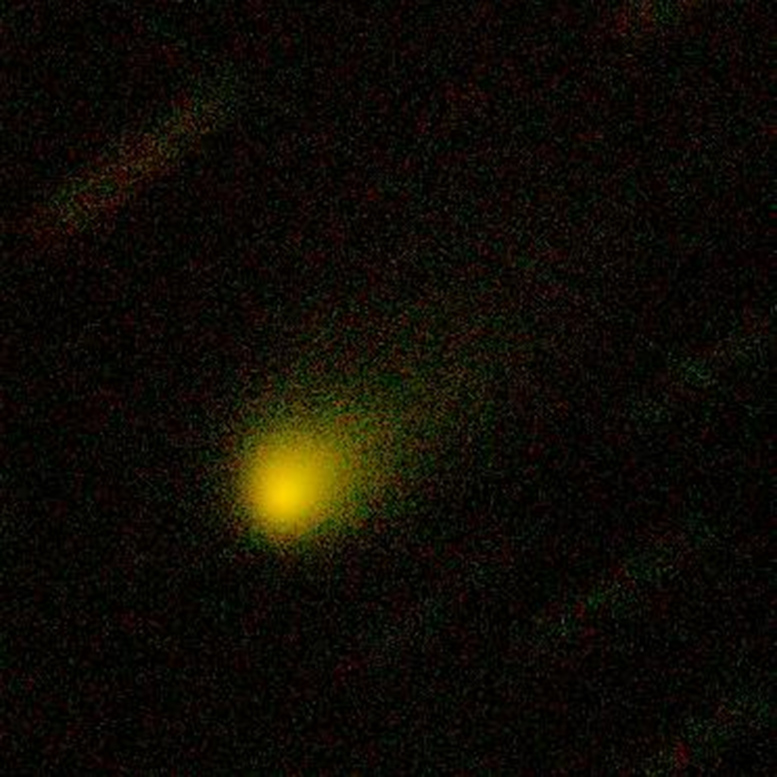The Mysteries of Two Interstellar Visitors
by P. Clay Sherrod
In 2017 for - so far as we know - the scientific world was witness to the passage of an object from what might be the deepest recesses of space, an interstellar visitor that was discovered in that year by the large telescopes in Hawaii.
Oumaumau, Hawaiian for "Scout" (Pronunciation: "Oh-moo-er-moo-er") was one of the most intriguing and odd objects ever seen - cigar shaped and with very low density and high reflective surface, some 1300 feet long; when it flew in its gravitationally-bent curve by our sun it was flying at the remarkable speed of 196,000 miles per hour.

Photos: Elongated Oumaumua (ESA artist rendering) and Borisov (Hubble Telescope photo)
-----------------
By all counts, after that as it headed back into the depths of space it should have begun to slow down - but it did not, it accelerated unlike any object that we have before seen. Speculation arose as to the nature of this object, but scientists (being the wary discipline that they are) avoided any mention of this object maybe NOT being nature....perhaps alien in nature.
I was not one of the silent ones, and many were thinking precisely what I had on my mind:
"I am reminded of one of the best Star Trek movies made: "The Voyage Home" (1986) in which the Earth is on the eve of destruction by a seemingly very, very low tech "propane tank looking" spacecraft of city size proportions, steadily coming closer and closer to Earth. This enormous dark vessel appears to be suffering from the wears of time and space and has nothing unusual about it other than its size and its ability to periodically come by Earth and check on the humpback whale population.
"From what I can gather, the size appears just about right for Oumuamua.
"At any rate, we shall at some date be scrambling for "just the right thing to do" when something artificial does come in from deep space. At some point, as I have stated before, we are going to have to come to a realization that not all objects we are going to see in the future are necessarily natural (P. Clay Sherrod 2018)...."
But as asteroid orbital astronomer Bill Gray replied: "I expect we'll have to do that eventually. But I _really_ doubt this is the object that's going to do it. It looks more like a natural object doing something head-scratchingly weird, as natural objects sometimes do. It_did_ come from another star; weirdness is to be expected. We're still
well within the realm of the naturally explainable."
------
Today, two years later, we still have no idea exactly why Oumaumau (properly now identified as 1I/2017 U1) behaved the way it did, nor why its physical characteristics were so unlike anything we had ever seen before.
While still "head-scratchingly weird" yet another interloper has been found this year, this one clearly from interstellar space beyond our most distant planets and clearly cometary (i.e., it has a tail) in nature.
C/2019 Q4 Borisov, discovered by Russian amateur astronomer Gennadiy Borisov, is now approaching our Earth's orbit, and appears much larger than Oumaumau with a central diameter of one mile across. It is speed toward us in a hyperbolic path at over 72,000 miles per hour and will pass closest on December 8 of this year.
Whether something has changed far outside our solar system to "throw" these objects our way, or if our technology has suddenly evolved to where we now recognize them as exo-planetary objects from other stars is something we do not know.
But we have now seen two in our lifetimes, both within a short span of only two years. The question remains: what are they, and why are we suddenly seeing objects passing so similarly through our solar system from deep space?
October 2019
* * * *

